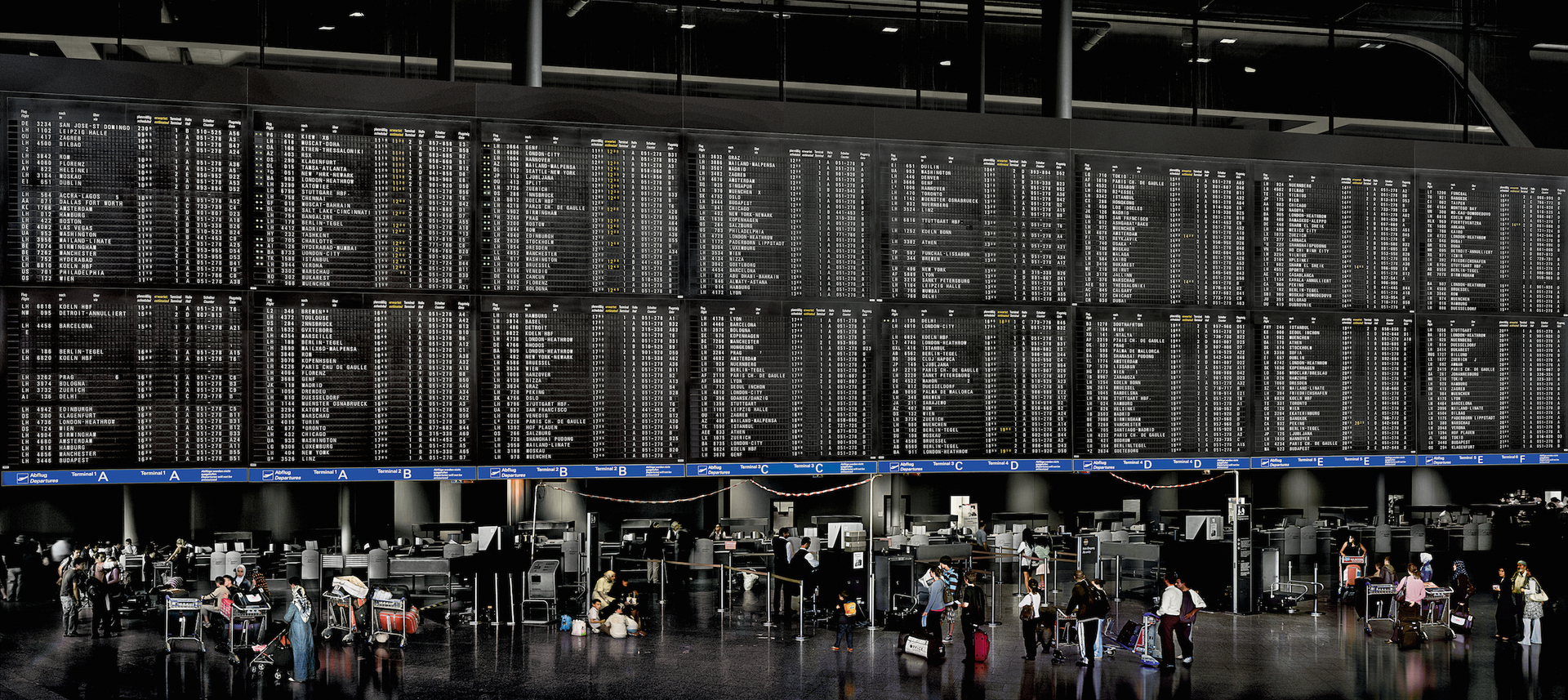Andreas Gursky
Andreas Gursky, who was born in Leipzig in 1955 and now lives in Dusseldorf , is widely regarded as one of the world’s foremost contemporary photographers. Among the hallmarks of his work are his use of colour, his supersize formats and his excessive deployment of digital image processing.
Few artists have managed to distil the specific characteristics of a certain culture, the mindset of a generation or the zeitgeist of an era into a single work. Just as a handful of iconic paintings have shaped our view of the Renaissance, so too has Andreas Gursky captured the essence of the economic and social situation of the late twentieth century in such works as Stock Exchange.
Gursky tends to focus on crowds of people and the places where they assemble, and on the structures of the globalised world with its production, trade, consumption and leisure. In one of his most recent cycles of photographs, Pyongyang , he takes this theme one step further, casting his gaze on a country that is one of the last unmistakably non-globalised societies in the world. This is no everyday scenario, but an organised mass event with an ideological back ground. Gursky, however, does not use the images to make a statement about the political background of the event. Instead, he uses them as visual raw material to be processed according to his own distinctive compositional approach.
In addition to the Pyongyang series, other recent groups of works indicate a shift in direction away from his previous individual photographs. These new cycles cover a broad range of themes as diverse as landscapes, Gothic church windows and Formula 1-racing. For all their differences, however, the works share clear compositional similarities that speak the same aesthetic language that rings out in Gursky’s earlier work.
In his choice of detail or the arrangement of digitally juxtaposed visual elements, Gursky explores the question of how to generate ornamental structures and even symmetries on the picture plane. This calls for an abstract take on the subject matter, seeing it not only in terms of its mimetic function, but also as a kind of construction kit filled with the building blocks of formal vocabulary that Gursky uses to compose his pictures. For this purpose, the artist often chooses an elevated vantage point, as in the James Bond Islands or Dubai World. By giving the structure precedence over the visual reality, and thereby making it absolute, Gursky manages to lend his photographs a universal validity. In this respect, his compositions go far beyond documenting the situation they describe, becoming symbolic forms that provide an insight into the way the world is today.
This exhibition, in concentrated form, presents some 25 works by the artist, most of them created in 2007. They include new motifs within the familiar thematic spectrum of recent years, such as a stock exchange trading floor in and the interior of a Frankfurt nightclub, as well as photographs from the latest series Pyongyang and F1 Pit Stop.

